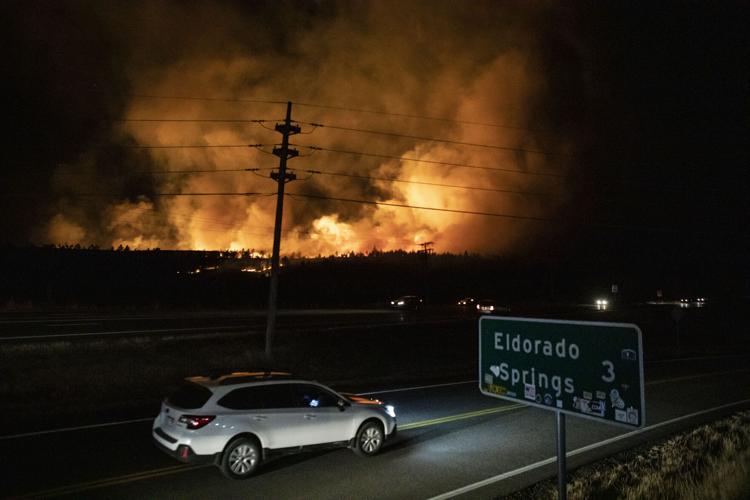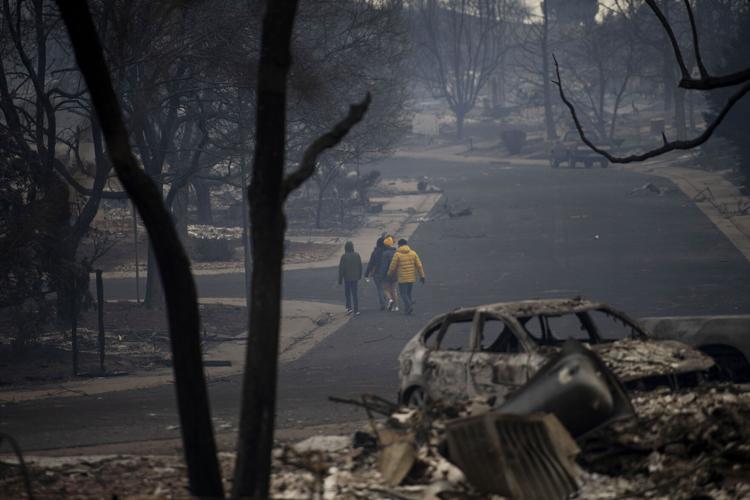Mistakes and heroics: Marshall Fire report points to gaps, well-coordinated evacuation of hospital
A formal report on the Marshall Fire outlined mistakes – notably gaps in alert systems and confusion among first responders – and what various agencies are doing to correct them.
Among the challenges listed in the 55-page After Action Review (AAR) were problems with public notification systems, including gaps in cellphone alerts and siren system coverage, miscommunication between various first responder agencies because of confusion over radio channels, lack of adequate personal protective equipment – as well water and snacks for fire and police personnel who were actively working the blaze – and no defined strategy for the evacuation, including a plan for hordes of vehicles fleeing oncoming flames.
The report was distributed to elected Louisville and Superior town leaders.
Some officials and residents read the report with disappointment that they weren’t asked to weigh in.
“It was a mess and I don’t fault them for that,” said Superior Town Trustee Neal Shah. “They never trained for a massive evacuation in an urban area. Now they have. It’s going to be something they do from now on.”
Mike Chard, Boulder County Director of Emergency Management, said these kinds of reports are the first attempt to assess what went well and what didn’t in response to any natural disaster, and that there were AAR’s for both the Four Mile Fire and the 2013 Floods.
“We were working on these things prior to the Marshall Fire and we continue to do that,” Chard said. “Had we known the Marshall Fire was going to hit, we would have been all hands on deck. We’ve gotten this assessment rolling and we will finish it up.”
Chard said one of the major problems with Colorado’s most destructive wildfire was the fact that Boulder County’s Wireless Emergency Alert (WEA) notification systems, similar to those sent out for Amber alerts, were not in place before the fire because the pandemic put his office behind. That system is now in place and had since been used during two ensuing fires after Marshall: the March NCAR Fire, which burned 190 acres, and the April’s Table Mountain fire, which a drone crash caused.
A colossal lesson learned from the Marshall fire is the awareness that fire season is not only year-round but also that a huge wildfire threat has spread to the plains.
“Before, we thought that the biggest risk for wildfire was in the mountainous areas because of the trees, but now we are looking at it in the grasslands as well,” Chard told The Gazette.
Louisville Police Chief Dave Hayes, who lost his home in the fire, said the disaster happening on one of the last days of December wasn’t on anyone’s radar and acknowledged his officers hadn’t trained for such a catastrophic event.
Vehicles trying to evacuate were backed up for 45 minutes and there weren’t enough roads leading out of the city, he said.
“We are doing table top exercises and planning so that when and if this occurs again, we’ll be better prepared,” Hayes said. “It’s important to talk what we would do differently and to self-reflect.”
Louisville Mayor Ashley Stoltzman said the report is a start.
Marshall Fire victims, however, want more.
Stoltzman said she’s going to push Boulder County to answer to residents.
“No one elected official or homeowner was contacted for their opinion when this AAR was written. We plan to have public hearings so that officials can get a better understanding from those who lost their homes about everything that needs to be corrected,” she said.
Among the problems that occurred during the Marshall Fire in Louisville:
- The fire jumped around. The act of firefighting shifted to evacuations and chaos ensued. Firefighters didn’t know which areas were first priority.
- Traffic was out of control for those fleeing the fire.
- Information-sharing between police and fire personnel was poor.
- There was lack of mental health for first responders.
- Grasses that had grown and become tinder-dry were not managed.
The uncut grasses in dry open space was a concern for Superior before the Marshall Fire tore through the town.
Shah told The Gazette that Superior had alerted Boulder County to the problem and no one did anything about it.
“We’re now even talking about organizing a community mowing event to get the grass cut,” said Shah.
The AAR also focused on what went right in the Marshall Fire response.
For example, though close to 1,100 homes were lost, firefighters saved many more, initial warnings went out quickly and roadblocks were established. Also, hundreds of law enforcement officers immediately started going door to door to evacuate people from Superior, Louisville and unincorporated Boulder County. Finally, the evacuation of Avista hospital was done efficiently and area long term care facilities were also evacuated.
In all, 37,500 people were evacuated in 3-4 hours, an event the AAR noted was unprecedented.
Chard agrees with Shah and Stolzman that the report is a starting point.
“It’s not 100%, but this report identifies where we have gaps and weaknesses. It’s an attempt to bring everyone together,” Chard said.















